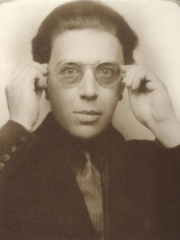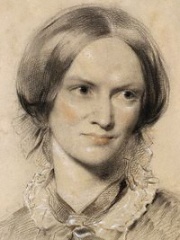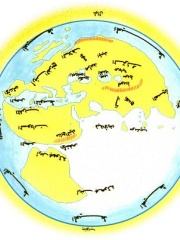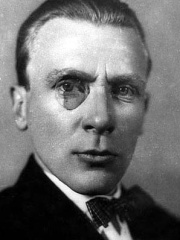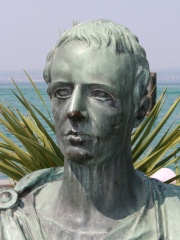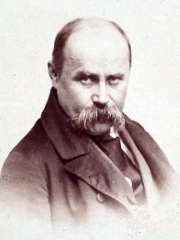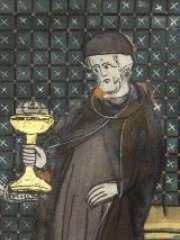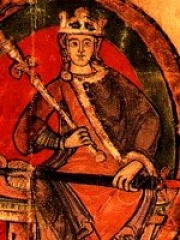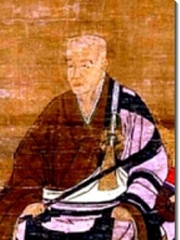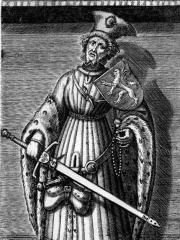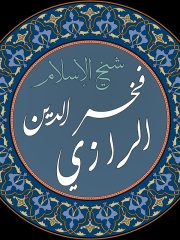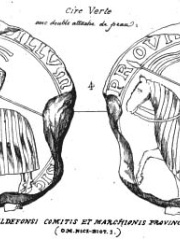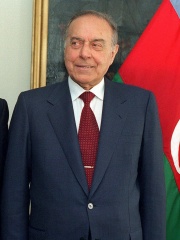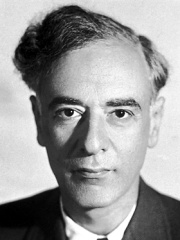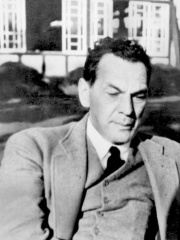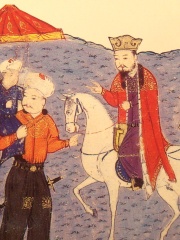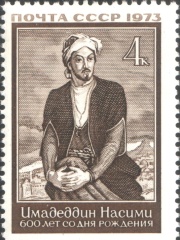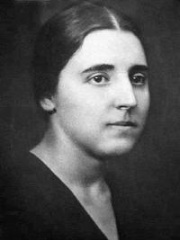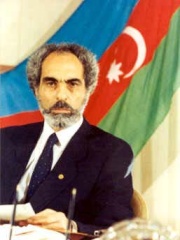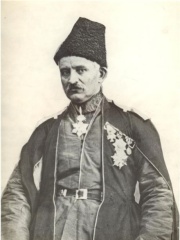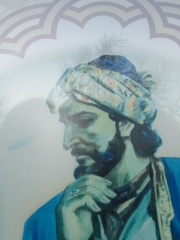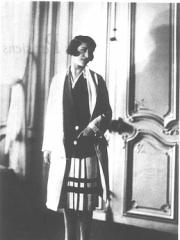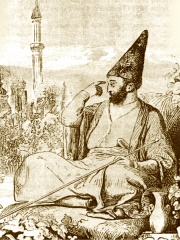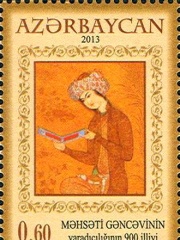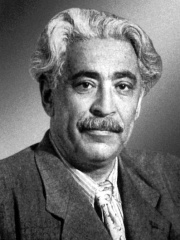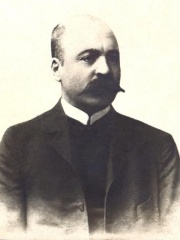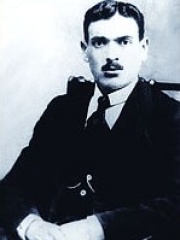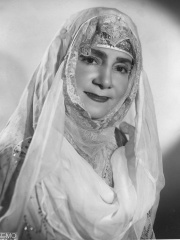WRITER
Nizami Ganjavi
1141 - 1209
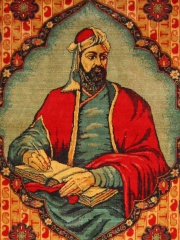
 Nizami Ganjavi
Nizami Ganjavi
Nizami Ganjavi (Persian: نظامی گنجوی, romanized: Niẓāmī Ganjavī, lit. 'Niẓāmī of Ganja'; c. 1141 – 1209), Nizami Ganje'i, Nizami, or Nezāmi, whose formal name was Jamal ad-Dīn Abū Muḥammad Ilyās ibn-Yūsuf ibn-Zakkī, was a 12th-century poet. Nizami is considered the greatest romantic epic poet in Persian literature, who brought a colloquial and realistic style to the Persian epic. His heritage is widely appreciated in Afghanistan, Republic of Azerbaijan, Iran, the Kurdistan region and Tajikistan. Read more on Wikipedia
His biography is available in 70 different languages on Wikipedia (up from 69 in 2024). Nizami Ganjavi is the 179th most popular writer (up from 181st in 2024), the most popular biography from Azerbaijan (up from 2nd in 2019) and the most popular Azerbaijani Writer.
Nizami Ganjavi is most famous for his epic poem, the "Khamsa," which is a collection of five long poems.
Memorability Metrics
Page views of Nizami Ganjavi by language
Among WRITERS
Among writers, Nizami Ganjavi ranks 179 out of 7,302. Before him are André Breton, Wisława Szymborska, William Faulkner, Anna Wintour, John Milton, and Charlotte Brontë. After him are Stéphane Mallarmé, Fernando Pessoa, Al-Masudi, Mikhail Bulgakov, Catullus, and Taras Shevchenko.
Most Popular Writers in Wikipedia
Go to all RankingsAndré Breton
1896 - 1966
HPI: 79.00
Rank: 173
Wisława Szymborska
1923 - 2012
HPI: 78.89
Rank: 174
William Faulkner
1897 - 1962
HPI: 78.87
Rank: 175
Anna Wintour
1949 - Present
HPI: 78.83
Rank: 176
John Milton
1608 - 1674
HPI: 78.82
Rank: 177
Charlotte Brontë
1816 - 1855
HPI: 78.80
Rank: 178
Nizami Ganjavi
1141 - 1209
HPI: 78.77
Rank: 179
Stéphane Mallarmé
1842 - 1898
HPI: 78.77
Rank: 180
Fernando Pessoa
1888 - 1935
HPI: 78.77
Rank: 181
Al-Masudi
896 - 956
HPI: 78.74
Rank: 182
Mikhail Bulgakov
1891 - 1940
HPI: 78.73
Rank: 183
Catullus
84 BC - 54 BC
HPI: 78.70
Rank: 184
Taras Shevchenko
1814 - 1861
HPI: 78.66
Rank: 185
Contemporaries
Among people born in 1141, Nizami Ganjavi ranks 1. After him are Gerard de Ridefort, Malcolm IV of Scotland, Eisai, Floris III, Count of Holland, and Azalais de Porcairagues. Among people deceased in 1209, Nizami Ganjavi ranks 1. After him are Fakhr al-Din al-Razi, Phillipe de Plessis, William of Champlitte, Alfonso II, Count of Provence, Raymond Roger Trencavel, and Margaret of Sweden, Queen of Norway.
Others Born in 1141
Go to all RankingsNizami Ganjavi
WRITER
1141 - 1209
HPI: 78.77
Rank: 1
Gerard de Ridefort
POLITICIAN
1141 - 1189
HPI: 72.76
Rank: 2
Malcolm IV of Scotland
POLITICIAN
1141 - 1165
HPI: 68.34
Rank: 3
Eisai
RELIGIOUS FIGURE
1141 - 1215
HPI: 65.03
Rank: 4
Floris III, Count of Holland
POLITICIAN
1141 - 1190
HPI: 62.69
Rank: 5
Azalais de Porcairagues
WRITER
1141 - 1177
HPI: 59.79
Rank: 6
Others Deceased in 1209
Go to all RankingsNizami Ganjavi
WRITER
1141 - 1209
HPI: 78.77
Rank: 1
Fakhr al-Din al-Razi
PHILOSOPHER
1149 - 1209
HPI: 71.93
Rank: 2
Phillipe de Plessis
POLITICIAN
1165 - 1209
HPI: 64.62
Rank: 3
William of Champlitte
POLITICIAN
1160 - 1209
HPI: 62.16
Rank: 4
Alfonso II, Count of Provence
POLITICIAN
1180 - 1209
HPI: 61.63
Rank: 5
Raymond Roger Trencavel
POLITICIAN
1185 - 1209
HPI: 60.51
Rank: 6
Margaret of Sweden, Queen of Norway
NOBLEMAN
1155 - 1209
HPI: 55.05
Rank: 7
In Azerbaijan
Among people born in Azerbaijan, Nizami Ganjavi ranks 1 out of 232. After him are Heydar Aliyev (1923), Lev Landau (1908), Ilham Aliyev (1961), Richard Sorge (1895), Mstislav Rostropovich (1927), Garry Kasparov (1963), Arghun (1250), Imadaddin Nasimi (1369), Nadezhda Alliluyeva (1901), Abulfaz Elchibey (1938), and Zecharia Sitchin (1920).
Others born in Azerbaijan
Go to all RankingsNizami Ganjavi
WRITER
1141 - 1209
HPI: 78.77
Rank: 1
Heydar Aliyev
POLITICIAN
1923 - 2003
HPI: 77.80
Rank: 2
Lev Landau
PHYSICIST
1908 - 1968
HPI: 77.61
Rank: 3
Ilham Aliyev
POLITICIAN
1961 - Present
HPI: 75.61
Rank: 4
Richard Sorge
JOURNALIST
1895 - 1944
HPI: 75.08
Rank: 5
Mstislav Rostropovich
MUSICIAN
1927 - 2007
HPI: 74.26
Rank: 6
Garry Kasparov
CHESS PLAYER
1963 - Present
HPI: 73.62
Rank: 7
Arghun
POLITICIAN
1250 - 1291
HPI: 73.02
Rank: 8
Imadaddin Nasimi
WRITER
1369 - 1417
HPI: 71.86
Rank: 9
Nadezhda Alliluyeva
POLITICIAN
1901 - 1932
HPI: 71.46
Rank: 10
Abulfaz Elchibey
POLITICIAN
1938 - 2000
HPI: 71.07
Rank: 11
Zecharia Sitchin
WRITER
1920 - 2010
HPI: 70.81
Rank: 12
Among WRITERS In Azerbaijan
Among writers born in Azerbaijan, Nizami Ganjavi ranks 1. After him are Imadaddin Nasimi (1369), Zecharia Sitchin (1920), Mirza Fatali Akhundov (1812), Khaqani (1126), Banine (1905), Mirza Shafi Vazeh (1794), Mahsati (1089), Samad Vurgun (1906), Jalil Mammadguluzadeh (1869), Ahmad Javad (1892), and Armen Ohanian (1887).
Nizami Ganjavi
1141 - 1209
HPI: 78.77
Rank: 1
Imadaddin Nasimi
1369 - 1417
HPI: 71.86
Rank: 2
Zecharia Sitchin
1920 - 2010
HPI: 70.81
Rank: 3
Mirza Fatali Akhundov
1812 - 1878
HPI: 68.46
Rank: 4
Khaqani
1126 - 1199
HPI: 65.14
Rank: 5
Banine
1905 - 1992
HPI: 64.98
Rank: 6
Mirza Shafi Vazeh
1794 - 1852
HPI: 63.21
Rank: 7
Mahsati
1089 - 1181
HPI: 62.59
Rank: 8
Samad Vurgun
1906 - 1956
HPI: 60.69
Rank: 9
Jalil Mammadguluzadeh
1869 - 1932
HPI: 60.50
Rank: 10
Ahmad Javad
1892 - 1937
HPI: 59.97
Rank: 11
Armen Ohanian
1887 - 1976
HPI: 59.69
Rank: 12
